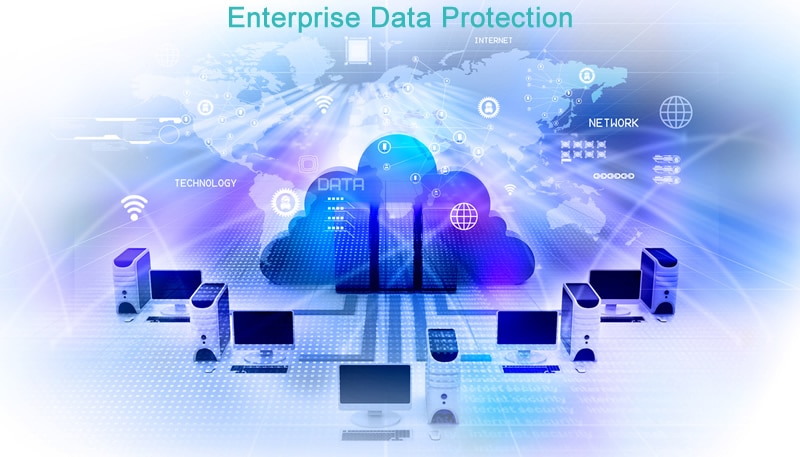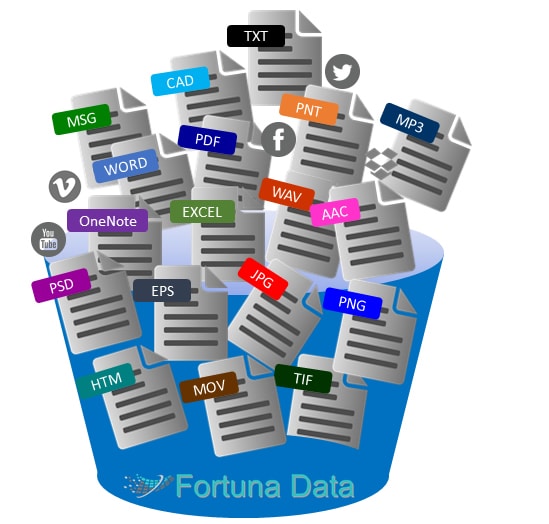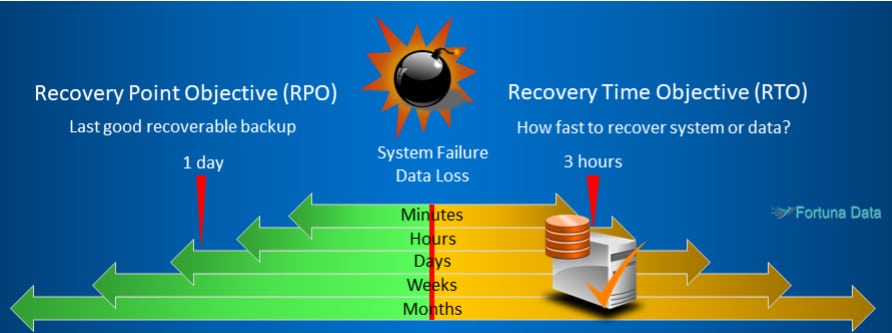Backup Software
Backup & Restore Solutions
We provide a comprehensive range of backup software solutions for backing up VMware, Microsoft Azure/Windows, Linux, Apple, Microsoft 365, Google Office, Unix and a wide variety of applications including SQL, Oracle, Exchange, VMware, Hyper-V, Apple OSX etc.
We provide various ways for purchase software:
- Software – Annual license, perpetual
- Backup Appliance
- DRaaS – Disaster Recovery as a Service
- VM – Deploy backup as a VM
- Managed Service – We manage your backups
Data backup should protect all types of storage and computing devices to disk, tape or the cloud. Backup is a chore but is essential in protecting the business against increasing threats that paralyse a business such as ransomware. The software comes in a variety of guises including protection for operating systems such as Windows, Linux, Apple, Unix, OS/400…, applications including Office 365, Exchange, SQL, Oracle SAP etc.

Backup Solutions
The requirement for a reliable backup solution is growing due to the diverse range of IT systems now in place and increasing threat of ransomware. A backup is designed to protect valuable information against data loss and provide instant recovery of files, volumes or complete systems, with minimum administration and be capable of restoring information quickly in order to get your business and users up and running. A backup solution might also be able to backup IOT, tablets, mobile phones and traditional servers, desktops, notebooks and storage arrays. But this isn’t always the case and there are many types of software specifically designed to backup these individual areas.
Why bother backing up data?
Businesses create daily all types of information, this is stored on many different varieties of protected storage platforms including RAID, NAS, Cloud, Software Defined, SSD, Flash etc. When a backup is performed it is a type of business insurance, if something happens your data will be protected and the data restoration works when required.
Protecting data is part of a business requirement, for peace of mind and against the following:
- Computer and storage systems are not 100% reliable and occasionally fail
- Ransomware is the fastest growing threat to businesses today
- Disgruntled employees
- Power outage
- Human error
- Malicious attack
- Acts of nature
- Fire/Flood
- Software fault
What to look for in backup software
With ever decreasing backup windows and 7×24 operations, choosing the correct type of backup software is critical. The type software you choose should also be able to backup everything in your current environment including Microsoft Windows, Apple OS X, Linux, and Unix as well as all the applications these systems run.
- What backup clients and targets are supported?
- Ability to restore individual mailboxes, messages, and files
- Perform image backups from virtual machines
- Data encryption on the tape device and across the WAN
- Single management GUI
- Bandwidth throttling/scheduling
- Continuous backup
- Perform multiple backup streams
- Utilise data deduplication
- Comprehensive reporting
- Easy to use and install
- Agent-less backup
- How is it licensed i.e. capacity or agent, front or back end?
- Can the jobs be managed centrally?
Types of backup
Software today can utilise a combination of disk-to-disk, disk-to-disk-to-tape, disk to tape, disk to Cloud, site to site etc. The software could also support data deduplication to reduce your backup volumes by 20:1. Whilst tape isn’t as popular, it still has a big part to play in backups. The biggest benefit in using tape media as a backup medium is that it provides up to 18TB native of capacity from an LTO-9 tape, is removable and offers the lowest cost per TB of any other storage media. It can also be used as part of a tiered archiving solution as shown below.
The Different Types of Backup Incremental, Full, Differential, Continuous Data Protection
Let’s learn more about the many types of backup, the differences between them, and which one is ideal for your company.
Incremental Backup
A full backup is the first backup in an incremental process. Only modifications made to a previous full backup will be saved in subsequent backups. Businesses have more freedom in spinning up these backups as often as they wish, storing those most recent changes.
Only incremental backups are stored in incremental backups, enabling lightning-fast backup systems.
Full Backup
The full backup is by far the most comprehensive form of backup, as it clones all of the data. Files, folders, SaaS apps, storage disks, and other items are included. The benefit of a full backup is the speed with which data can be restored. However, because everything is saved up at once, it takes much longer to back up than other backup methods.
Another major issue with complete backups is that they consume too much storage space. That’s why most firms perform a full backup followed by a differential or incremental backup now and then. This minimises the demand for storage space while simultaneously expanding it.
Differential Backup
A differential backup sits in the middle of a comprehensive and incremental backup. This backup type entails backing up data that has been created or modified since a full backup. To put it differently, a full backup is performed immediately, followed by backups that include all file and folder changes.
Because it only requires two backup elements: an initial full backup and the most recent differential backup, it allows you to restore data faster than a full backup.
Bare Metal Recovery
Bare metal recovery or BMR is commonly known as disaster recovery, which is supported by Fortuna Backup. If you lose a complete system, you can restore it from a backup using the Fortuna Client, either on the local machine or remotely.
Where is all this data coming from?
Unstructured data is the biggest headache today for any organisation trying to control and manage data. The unstructured data consumes over 70%of all information stored and is growing at 61% per annum!
What is unstructured data?
Firstly, let’s understand what we are dealing with. Unstructured data is the information which is typically not stored in a database.
Unstructured data manifests itself in two ways:
1. “TEXT” can be e-mail, texts, word documents, presentations, messaging systems, Twitter, Facebook etc.
2. “RICH MEDIA” can be images, sound files, movie files etc.
As we have explained, unstructured data consumes vast amounts of storage, but another consideration is legislation. Where this data resides is important if you need to retrieve the information for a compliance audit or lawsuit.
Definition
- data can be of any type
- not necessarily following any format or sequence
- does not follow any rules
- is not predictable

Structured Data
This type of data is organised and easily accessible such as databases and large search indexes. This type of data is also very fast to retrieve and interrogate for analysis or usage patterns.
Definition
- data is organised in semantic chunks (entities)
- similar entities are grouped together (relations or classes)
- entities in the same group have the same descriptions (attributes)
- descriptions for all entities in a group (schema)
Cloud backup
A cloud backup is fine, but you have to consider what you are backing up, how long you need to store it in the cloud and how many copies do you need.
How much would it cost to store 50TB of backup data in the cloud for 2 years based on a 40% increase in data year on year?
If we take 240 working days (excluding weekends and bank holidays) and we only take daily backups.
1TB = £10 per month
40% of 50TB = 20TB /240 = 83.33GB per day increase year 1
£8,400.00
40% of 70TB = 28TB /240 = 116.66GB per day increase year 2
£11,760.00
Total cloud storage cost for 2 year = £20,160.00
Technology creates more data
Modern technology, mobile devices, IoT all contribute to increased data generation. Mobile phone apps, improved camera resolutions, easier access to more applications, CCTV, recorded video now at 1080P/2K/4K/8K. Our everyday office applications create larger files as information is embedded within the documents. Operating systems and software applications are larger. In addition to this, hard disk sizes have dramatically increased with 20TB 3.5″ drives and we tend to keep everything forever which doesn’t help when trying to decipher business information from private individuals information.
Reason to use Deduplication and Compression
Data deduplication and compression are similar to salt and pepper in many ways. Although both deduplication and compression reduce storage capacity.
By removing duplication at the binary level within a block, data compression saves space. Data deduplication (also known as dedupe) saves space by removing redundant data blocks.
Only if there is duplication in the data set can storage capacity to be reduced. This means that the data set must be made up of numerous similar files or documents that share a portion of data with other files.
Data compression saves space by removing duplication at the binary level within a data block. Compression, unlike dedupe, is unconcerned about whether a duplicate copy of the same block exists; it merely wants to save the most efficient block on flash. Compression algorithms “inflate” and “deflate” data as it is read or written by storing it in a format that is denser than the native form. The higher compression and decompression speeds are frequently accompanied by lower space savings.
Backup software choices
Whilst there are different types of backup software available, deciding where your backup data resides also plays a critical part on how soon you can recover from data loss or system failure. Traditional backup relied on tape, increasingly disk started to provide disk-2-disk systems, they then included compression and deduplication, replication and we have support for cloud based applications i.e. Office 365. Backup software can support Hyper-V, KVM, Nutanix & VMware.
Companies tend to change operating systems more than they change their backup systems and software!
5 Key features and benefits for backup software
1. Speed and simplicity of recovery, volume file, and folder / file deletion and Ransomware
2. Ease of management SLA driven single pane of glass
3. Scalability and Security
4. Support for virtual and physical assets
5. Value for money
Legislation
Increasingly industry is being instructed to have in place adequate data protection systems in place to protect against data loss and secure companies information. With stricter fines and penalties in place those that flout the laws. With increased fines and legal penalties in addition to the loss of service, data and customer good will data loss of any kind can cause all types of industries irreparable damage. Legislation such as Sarbanes-Oxley Act for example, cover strict data sovereignty and security requirements prevent organisations from saving personal data to the cloud if that data leaves the country of residence at any time.

RTO/RPO
Critical to any business is the ability to recover data from corruption, loss, attack or environmental disaster.
- RTO Future (Recovery Time Objective) – How quickly a business can recover from the above within a given service level i.e. loss of a server = 2 hours to be functional
- RPO Past (Recovery Point Objective) – How far back your business is prepared to lose data based on the backup routine i.e. restore last nights data = 8 hours lost transactions
DR planning
Any DR plan is only as good as the last restore. If you install new systems and decide to run a DR plan 3 months later then the chances of hitting an issue are high, alternatively, if you perform a weekly restore of random data, monthly restore of a disk and quarterly restore of a server then the chances of having problems should a real disaster strike are massively reduced. There is no substitute for planning and documenting your procedure in detail as without one you are steering a rudderless ship in a stormy sea.
How can we help?
We work with some of the world’s leading software companies to provide solutions to enable your business to securely backup and archive data.
